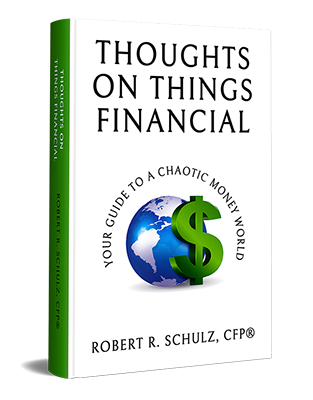With regard to a fiduciary standard for my industry, it’s been a long road so I won’t bore you with the historical details. From the lawsuits (see End of “Merrill Lynch” Rule Leaves BOMs in a Muddle) to the CFP Board in-fighting (see One year on, Goldfarb wants amends from CFP Board over fee flap), and now most recently the Department of Labor’s attempts (see Financial advisors weigh in on future of DOL fiduciary rule), it’s been a wild ride. Unfortunately, a workable definition for advisers to adopt and adhere to has been elusive…..until now.
An upstart, The Institute for the the Fiduciary Standard, just recently created a Fiduciary Advisor Affirmation Program that effectively defines a healthy fiduciary relationship between adviser and client. Here is a link to their adviser agreement: Best Practices document. It perfectly checks the block for those of us who authentically work towards our clients objectives. Schulz Wealth will incorporate this program into our regulatory documents and Best Practices at the beginning of the year.
Some standards, like those in the fee-only category, are so strict, they completely exclude advisers who have workable conflicts that can arise from the complexities of the industry. I believe as long these conflicts are disclosed, along with any compensation derived from a transaction related to a client, a fiduciary relationship can still be maintained.
Here is how The Institute deals with conflicts of interest in their Best Practices Code of Conduct:
“If your advisor does receive compensation in association with a transaction, your advisor 1) affirmatively discloses the conflict with ‘sufficiently specific facts’ to allow client understanding, and 2) manages the conflict to preserve the client’s best interests. For material conflicts your advisor 3) obtains informed written client consent. Also, 4) your advisor affirms the transaction remains consistent with the client’s best interests. Further, he or she provides clients and prospective clients a written description of conflicts and steps to manage them.”
Other standards are too lenient and have gone down a confusing and muddled path. In general, the fiduciary standards set forth by the industry’s regulators and large firms (broker/dealers and wirehouses) allow an adviser to call themselves a fiduciary in some cases, but to remove their fiduciary “hat” in other cases. For instance, an adviser may be allowed to run a retirement plan for you and charge you a fee as a fiduciary, then turn right around and sell you a high commission product to fund the retirement plan as a non-fiduciary. The solution does not have to be in your best interests, only “suitable” based upon your age, risk tolerance, and investment experience.
The new DOL Fiduciary Rule on the surface appears to protect consumers from this scenario within retirement plans and IRA’s, but in reality only complicates it further by requiring an additional disclosure called a Best Interest Contract Exemption (BIC Exemption). The exemption is onerous and contains strong language intended to warn a consumer who will probably never read it. The BIC Exemption only applies to retirement products derived from ERISA and therefore under the DOL’s regulatory authority. Do you understand any of this? Neither does anybody else, so I don’t see how the Department of Labor has helped matters at all.
In my opinion, there should be no hat-switching or exemptions when facing a client with recommendations and solutions. You are either a fiduciary or you’re not, regardless of the scenario, conflicts, compensation, disclosures, or product. Why can’t the industry as a whole adopt a simple standard like this, the one so brilliantly defined by The Institute for the Fiduciary Standard? As Josh Brown stated in one of my favorite Forbes articles this year (see The Most Horrendous Lie on Wall Street) an estimated 17 billion dollars in “excess fees and adverse performance” is at stake, and Wall Street will fight tooth and nail for it to the very end.
My hope is while the large Wall Street firms, broker/dealers, and insurance companies fight to preserve their lucrative commission-based profits, independent RIA firms, like mine, will gain more and more traction with consumers. Like most independent RIA firms, I don’t have the marketing and advertising power or regulatory influence of my larger competitors like Wells Fargo or Morgan Stanley. However: I do have a far superior business model, based upon a simply-defined fiduciary standard that applies in all situations.
If you are interested in learning more about working with an adviser who has your best interests in mind, feel free to contact me directly by clicking here.

